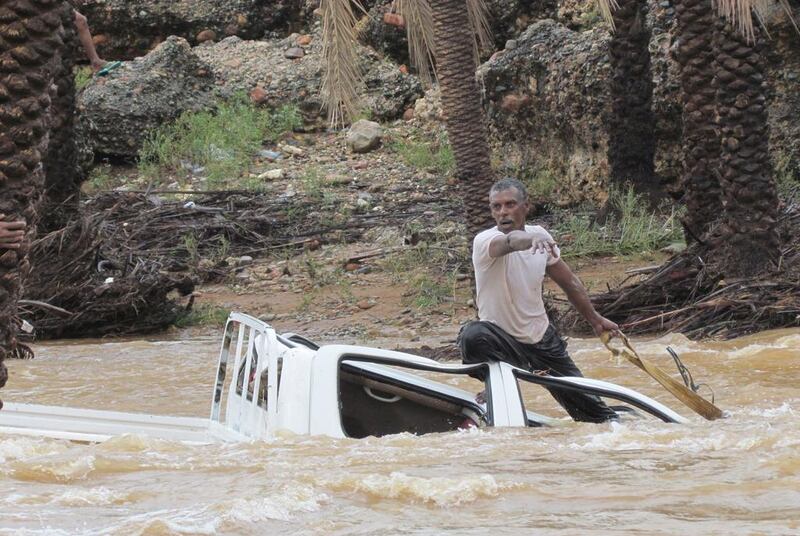Aden // Tropical cyclone Chapala was expected to smash into the Yemen coast on Tuesday after wreaking havoc on the island of Socotra.
Heavy rain fell in Al Mahrah and in Hadramawt provinces on Monday as residents in the coastal areas fled their homes and headed inland to safer areas.
Chapala was forecast to make landfall at about 10am UAE time near the town of Al Mukalla, which is controlled by militants from Al Qaeda and a tribal council.
The UN World Meteorological Organisation said the storm was an “extremely severe cyclonic storm” and that winds would be about 120 to 130 kilometres per hour when it hit the coast. Sea conditions around the centre of the storm were “phenomenal”, the WMO said.
The cyclone edged towards Yemen after devastating Socotra, an archipelago of about 50,000 people, 350km south of the mainland. Three people were killed and 100 injured, Reuters reported.
Eighty homes had been completely destroyed and a further 100 partially destroyed, an island official told The National.
“The seawater flooded the houses while some of the residents were still inside, but they managed to swim and save themselves,” said Salem Dahaq, director of Socotra’s Hadebo district.
He said about 2,000 families were left homeless with many sleeping in schools and mosques. Communication across much of the main island were down, making it difficult to get a clearly picture of the levels of damage. Mr Dahaq called on the Yemeni government and charities for help.
Charities from the UAE and Saudi on Monday sent aid to the people of Socotra and prepared relief supplies for mainland Yemen. The Emirates Red Crescent, the Khalifa Foundation and the King Salman Humanitarian Aid and Relief Centre are arranging for tonnes of foodstuff, medicine, blankets and clothes to be sent by air to the worst-affected areas.
Late last night, residents along Yemen’s coast were preparing for the worst. Al Mukalla resdent Sabri Salem said there was heavy rain and the sea was extremely rough.
“The seawater reached to the streets in Al Mukalla and the water entered houses in the city but the residents had already left,” he said.
Some residents worried that the power vacuum in the region would mean no authorities were in a position to deal with storm damage.
“The seawater level has risen by 9 metres and has destroyed Mukalla’s seafront,” Muhammed Ba Zuhair, another resident, told Reuters. “No relief or aid efforts are under way by either the tribal council or Al Qaeda, and the situation is really bad.”
Earlier forecasts had predicted that the storm would make landfall near the border between Oman and Yemen. However, the cyclone has tracked farther west than expected and Oman is likely to escape the worst of the wind and rain.
However, Oman’s meteorological authority warned that waves as high as three metres were still expected to hit the shores of the Dhofar and Al Wusta provinces.
The cyclone is expected to be the worst to hit Yemen since 2008, when flooding killed 180 people.
foreign.desk@thenational.ae
* With Agencies





